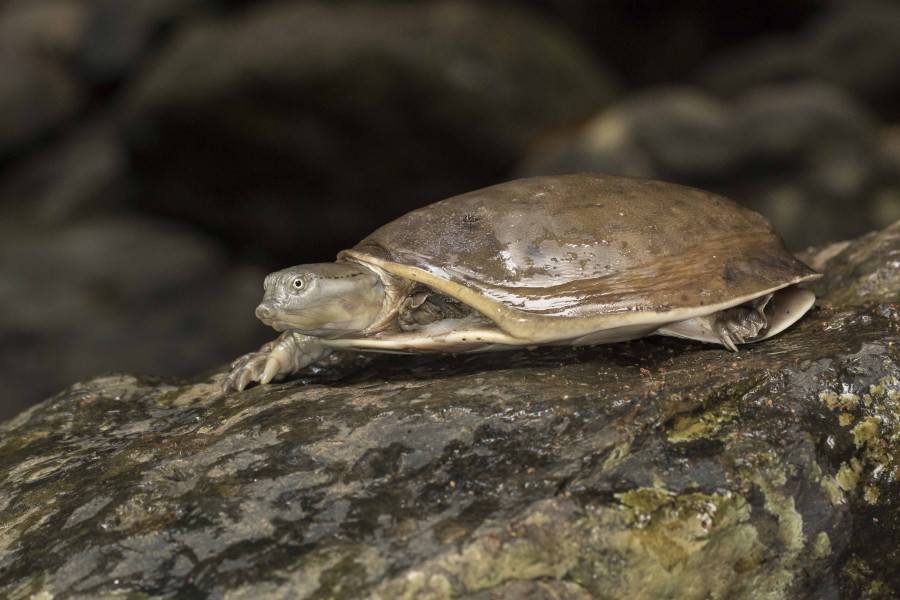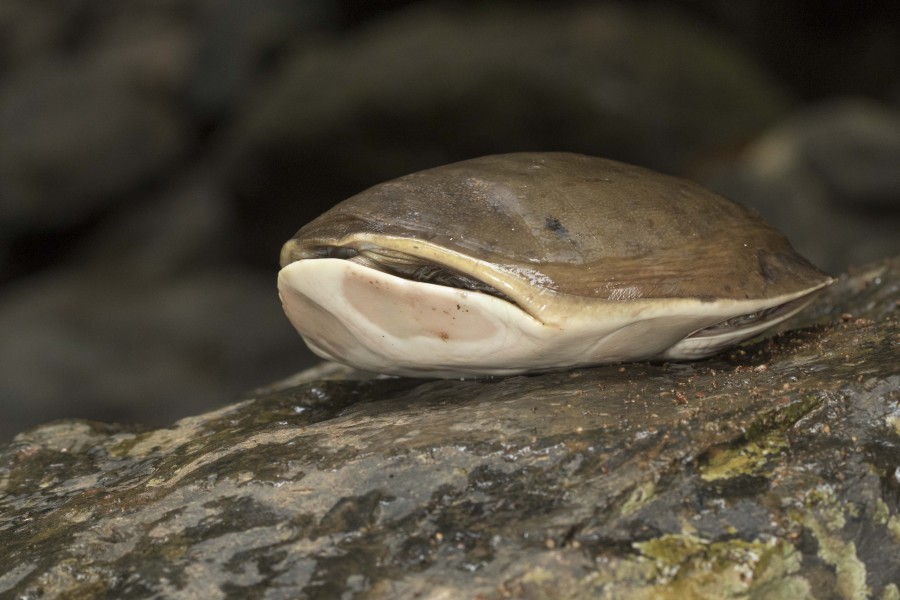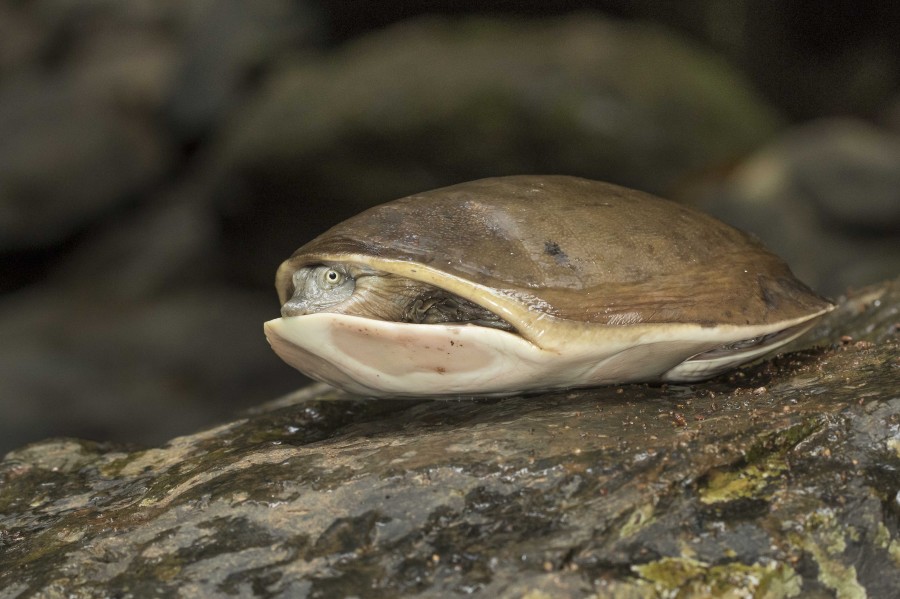Click on the pics to load them in high resolution
Length females up to 35 cm.
Males 10 cm less
The Indian flap shell turtle is a very comical looking creature. Its neck when fully extended resembles a snake and its tubular nostrils make the turtle look like a close cousin of the pig! Growing up in Goa I remember the flap-shell turtle always being sought after by villagers. Turtle meat was prized and there was a time when adult flap-shell turtles were openly sold for the pot in the local markets. Thanks to our wildlife laws that doesn’t happen anymore. But even back then not all captured flap-shell turtles suffered the same fate. Many people who found a flap-shell turtle would introduce it into their house well instead. Its a known fact that the flap-shell turtle reduces organic pollution in aquatic ecosystems by feeding on fallen insects and fragments of dead animals. While the turtles remained prisoners in these wells they often survived very well, with many of them living many years in these man-made ecosystems.
A wild flap-shell turtle held the right way up will usually try to claw its way out of your hands. Held upside down it is more likely to withdraw its neck and all four legs back into its shell and bent the front and back edges of its plastron (the lower shell of the turtle) to completely hide its retracted head and limbs. Skin flaps on the plastron neatly cover the hindlimbs and the tail. These skin flaps are unique to the Indian mud turtle and distinguish it from all other species of freshwater turtles of the Indian subcontinent. Incidentally, if a turtle is left on its back unmolested for a minute or so it will cautiously push out its long neck and use its nose to pivot and flip itself over onto its belly and then scamper to safety!
Unlike terrapins flap-shell turtles have fully webbed digits. They also have a rubbery shell, which obviously doesn’t afford the same level of protection that the rock hard shell of a terrapin does.
While flap shell turtles are strong swimmers they spend a considerable part of their life burrowing and therefore tend to live in shallow waterbodies with sand or mud bottoms. When hunting, a flap shell turtle often lies half buried in the mud and suddenly shoots out its neck to snap up unsuspecting prey. Flap shell turtles are catholic in their diets taking almost everything from water plants to frogs, fish, crustaceans and snails.
During the drier seasons they burrow into dried river beds and can go long periods without food (a captive specimen on record survived two years without eating anything at all!). The skin flaps on the plastron assist in ‘sealing’ the turtle and reducing moisture loss in these harsh conditions. Although many turtles die during drought conditions some turtles have been reported to have survived up to 160 days.
Over the years I have encountered flap shell turtles a number of times in the monsoons. Some were very small (the size of a small biscuit) and obviously only a few days old. Others were bigger than a dinner plate and about 3-4 kilos in weight. The specimen in the photograph is a smallish adult weighing about two kilos.
J.C. Daniel’s book (Amphibians and Reptiles of India) mentions that there are two races of Mud turtle: The Indo-Gangetic flap-shell turtle which has yellow spots on its head and the Peninsular flap-shell turtle which has black streaks on its head and is the one captured in the photograph.
Mud turtles can lay 2-3 clutches of eggs a year. The clutches, which comprise of 2-16 eggs, are buried in the soil for protection.



